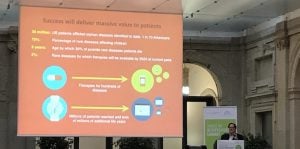Looking to connect with decision-makers and research teams eager to partner with the latest research, assets, and expertise? Consider joining Inpart's global network for free.
Stay informed about the latest funding and financial news in the biotech industry. Dive into the dynamic realm of investments, funding rounds, and financial developments, encompassing Seed, Series A and Series B funding, initial public offerings (IPOs), venture capital investments, government funding, and more.






















